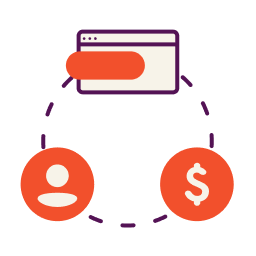As a small business owner, you likely wear many hats. You’re at once a product developer, marketer, and a customer service representative. But, one of the most overlooked tasks you may have is accounting.
Managing your company’s books is a time-consuming and complex process, but it’s necessary for your business’ success. If you plan on applying for a business loan, it’s important to pay attention to key financial topics and learn how to create and read balance sheets so you can secure the necessary financing.
“Small business owners need a balance sheet to keep track of their financial health” says Jo-Ann Yuen, a Chartered Accountant with 20+ years experience with multinational corporations and start-ups and the VP of Finance for Nav. “They need to clearly know what they own and what they owe. Small business owners need to know their assets, liabilities and equity in their business and how to optimize their financial position.”
Knowing where you stand financially is vital for the health and direction of your business. Keeping tabs on your business credit is just as important. Nav’s Business Boost and Business Loan Builder plans can help.
Whether you handle your business’ finances yourself or outsource your accounting to a professional, here’s what you need to know about business balance sheets and why they’re important for business loan applications.
What is a balance sheet?
A balance sheet is a statement of your business’ assets, liabilities, and shareholders’ equity at a specific date. It offers an overview of what your business owns and what outstanding debt it has. It gives you an idea of what the business is worth at a certain point.
A balance sheet is made up of two sides: on the left, businesses list their assets. On the right, they list their liabilities and shareholders’ equity.
What are balance sheets used for?
Your balance sheet shows that your business is balanced, meaning the total value of your assets is equal to the combined value of your liabilities and equity.
It gives you a complete snapshot of your business’ finances. By looking at it, you can see how liquid your assets are, so you know exactly how much cash you have available. It also lets you know how efficient your business is. By reviewing your balance sheet, you can tell how well your company uses it assets to generate revenue versus debt.
Accountants, lenders, and creditors will review your balance sheet to analyze your company’s financial performance. The balance sheet is also used in accounting calculations to determine your debt-to-income ratio and your accounts receivable ratio.
Balance sheets are particularly useful when you can compare one to an earlier version, such as from last quarter or last year.
You can look at your balance sheet to see if the business has enough liquid assets to cover its operational expenses, if you have enough liquidity to take advantage of business changes or to cover unexpected expenses, if your numbers are showing increased profits, and if your current path of growth is sustainable.
What is included in a balance sheet?
In general, you should plan on compiling a balance sheet either monthly or quarterly. You can do so using accounting software, or you can use a template.
A balance sheet includes the following information:
Assets
In the assets section, the balance sheet lists anything of value the business owns. Typically, the balance sheet will list the assets based on its liquidity, meaning how quickly it could be converted into cash.
The balance sheet will detail current assets, which can be turned into cash within one year or less. Current assets include:
- Cash reserves in business checking or savings accounts
- Security investments that can be sold in one year
- Money that your clients owe you for services rendered or products sold
- Inventory of finished products or raw materials
- Prepaid expenses, such as business insurance
The balance sheet will also list any long-term assets, which are assets that can’t be converted into cash within one year. That includes fixed assets, like property or equipment, long-term securities, and intangible assets like copyrights or patents.
Liabilities
After your assets, the balance sheet will list your business’ liabilities. Your liabilities are the money you owe to others.
Like assets, liabilities are broken down into short-term and long-term categories. Short-term liabilities include costs like rent, utilities, and payroll. Long-term liabilities include deferred income taxes and loans.
Shareholders’ equity
The shareholders’ equity, also known as the capital or net worth, is the money that would be left over if you sold all of your business’ assets and paid off all of its outstanding debt. The remaining money would belong to the shareholders, or the owners, of the business.
How lenders use balance sheets
When you apply for a small business loan, lenders will often request three major financial documents:
- Balance sheet: Balance sheets show what your company owns and what it owes at a specific point in time.
- Profit and loss statement: Your profit and loss statement details how much money you’ve made and how much you’ve spent over a set period of time.
- Cash flow forecast: The cash flow statement estimates how much money is coming and going out of your business.
When viewed together, these three documents give a comprehensive view of your business’ financial strength.
Lenders will typically look at the balance sheet first since it gives a snapshot of your business’ financial health, including assets and liabilities. Most lenders will ask established businesses for balance sheets from the past three years, and a projected balance sheet that covers at least two years. If your balance sheet shows that your business is unbalanced — meaning your business has more liabilities than assets — you are unlikely to qualify for a loan.
Next, lenders will review your profit and loss statements — also known as your income statements — from the past three years. If you’re applying for a loan, especially as a new company, you should also prepare projected profit and loss statements for at least two years.
They will also review your cash flow forecast to ensure your business is solvent and has enough cash flow to cover its expenses (including your new loan payments).
When you apply for a business loan, you should create a cash flow forecast for at least the next 12 months. Include information about incoming cash assumptions, expenses, and any financing you already have in place.
In addition to these three documents, business loan lenders will also review your business and personal tax returns over the past three years. They may also request to see your bank statements, as well.
The difference between a balance sheet and income statement
Your balance sheet and income statement are two of the most important documents your business has.
Your income statement lists the revenues, expenses, and profits and losses accrued during a specific time period. It gives a quick picture of what profits your business is generating. Unlike a balance sheet, it doesn’t show your liabilities and debt.
The bottom line of an income statement is the company’s net earnings or losses, which shows how profitable your business has become.
Managing your accounting
Your balance sheet is an important component of your business’ accounting. It shows the financial health of your company at a specific moment in time, and allows you to see exactly how your company is performing and growing over time.
Because lenders and creditors review your balance sheet to determine whether or not to issue you a small business loan or line of credit, it’s important to ensure your balance sheet is thorough, accurate, and up to date.
This article was originally written on October 7, 2019 and updated on February 1, 2021.




Have at it! We'd love to hear from you and encourage a lively discussion among our users. Please help us keep our site clean and protect yourself. Refrain from posting overtly promotional content, and avoid disclosing personal information such as bank account or phone numbers.
Reviews Disclosure: The responses below are not provided or commissioned by the credit card, financing and service companies that appear on this site. Responses have not been reviewed, approved or otherwise endorsed by the credit card, financing and service companies and it is not their responsibility to ensure all posts and/or questions are answered.